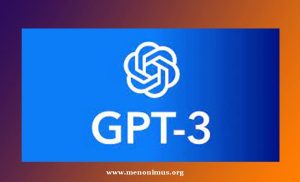GPT-3: The Evolution of Natural Language Processing
GPT-3: The Evolution of Natural Language Processing
Introduction
The development of artificial intelligence has ushered in a new era of technological innovation, with natural language processing (NLP) at the forefront of this revolution. Among the remarkable advancements in NLP, GPT-3 (Generative Pre-trained Transformer 3) stands out as a pinnacle achievement. GPT-3, developed by OpenAI, represents a significant milestone in the field of machine learning and has garnered substantial attention for its capabilities and potential applications. This essay aims to provide an exhaustive overview of GPT-3, covering its history, architecture, capabilities, limitations, ethical considerations, and potential future directions.
History of GPT-3
To understand GPT-3’s significance, it’s crucial to trace its lineage back to earlier developments in NLP and machine learning. Preceding GPT-3 were GPT-1 and GPT-2, both of which demonstrated impressive language generation capabilities. However, GPT-3 marked a substantial leap in terms of scale, performance, and complexity. Released in June 2020, GPT-3 was trained on an enormous dataset comprising 570GB of text from the internet, containing a diverse range of topics and writing styles. This vast corpus served as the foundation for GPT-3’s remarkable language generation abilities.
Architecture of GPT-3
GPT-3 is built upon the Transformer architecture, which was introduced by Vaswani et al. in their 2017 paper “Attention Is All You Need.” The Transformer architecture has since become a cornerstone of modern NLP models due to its efficiency in handling sequential data. GPT-3, like its predecessors, employs a deep neural network composed of multiple layers of self-attention mechanisms and feedforward neural networks. Its architecture consists of 175 billion parameters, making it one of the largest and most powerful language models ever created.
Capabilities of GPT-3
1. Natural Language Understanding: GPT-3 exhibits an impressive ability to understand and process natural language. It can comprehend context, answer questions, and generate coherent text in response to prompts, showcasing its aptitude for various language-related tasks.
2. Language Generation: GPT-3’s primary strength lies in generating human-like text. It can produce high-quality articles, stories, poetry, and code snippets, demonstrating its versatility in creative and technical writing.
3. Multilingualism: GPT-3 can work with multiple languages, although its proficiency varies depending on the language in question. Its ability to handle diverse linguistic inputs contributes to its global applicability.
4. Chatbots and Conversational Agents: GPT-3 has been integrated into chatbots and virtual assistants, enabling more natural and context-aware interactions. This makes it valuable for customer support, virtual companions, and other conversational applications.
5. Text Summarization: GPT-3 can summarize lengthy articles, documents, or discussions, condensing complex information into concise and coherent summaries.
6. Language Translation: With its multilingual capabilities, GPT-3 can be used for language translation, simplifying cross-lingual communication.
7. Creative Writing: GPT-3 has been used to assist authors, screenwriters, and content creators by generating ideas, character dialogues, and even entire narratives.
8. Coding Assistance: Developers have leveraged GPT-3 for code generation, auto-completion, and debugging tasks, making software development more efficient.
Limitations of GPT-3
While GPT-3 is a remarkable achievement, it is not without its limitations:
1. Lack of Common Sense: GPT-3 lacks true comprehension of the world. It generates text based on patterns learned from data but may produce incorrect or nonsensical information.
2. Bias and Controversy: GPT-3 can perpetuate biases present in its training data, leading to concerns about fairness and ethical implications in its usage.
3. Absence of Explicit Values: GPT-3 doesn’t possess a moral compass or explicit values. Its responses can vary depending on the input and may not always align with ethical standards.
4. High Computational Cost: Training and deploying GPT-3 models require substantial computational resources, limiting access for smaller organizations and researchers.
5. Limited Context Understanding: GPT-3’s understanding of context has limits, and it may produce contradictory or incoherent responses to complex queries.
Ethical Considerations
The development and deployment of GPT-3 raise several ethical considerations:
1. Bias Mitigation: Efforts must be made to reduce biases in GPT-3’s outputs to ensure that it does not propagate discriminatory or harmful content.
2. Content Regulation: Policymakers and platforms using GPT-3 must establish guidelines and mechanisms for content moderation to prevent misuse.
3. Privacy Concerns: As GPT-3 can generate realistic text, it may be exploited for phishing, identity theft, or other malicious purposes, necessitating safeguards for user privacy.
4. Accountability: Determining responsibility for GPT-3-generated content is challenging, raising questions about accountability in the event of misinformation or harm.
Future Directions
The future of GPT-3 and similar models is filled with promise and challenges:
1. Improved Training Data: Continual improvement of training datasets to reduce biases and enhance performance is crucial.
2. Smaller and More Efficient Models: Developing smaller, more accessible versions of GPT-3 will broaden its applications and accessibility.
3. Customization: Allowing users to fine-tune GPT-3 models for specific tasks will enhance its utility across industries.
4. Ethical AI: Integrating ethical and value-based considerations into AI models like GPT-3 is essential for responsible AI development.
Conclusion
GPT-3 represents a watershed moment in the evolution of natural language processing and artificial intelligence. Its remarkable language generation capabilities have the potential to transform a wide range of industries, from content creation to customer service. However, its limitations and ethical considerations underscore the need for responsible and ethical deployment. As technology continues to advance, GPT-3 will undoubtedly be a pivotal milestone in the ongoing quest to understand and harness the power of artificial intelligence in the realm of human language. 0 0 0.
You May Like:
Artificial Intelligence: A Boon or Curse on Human Civilization







